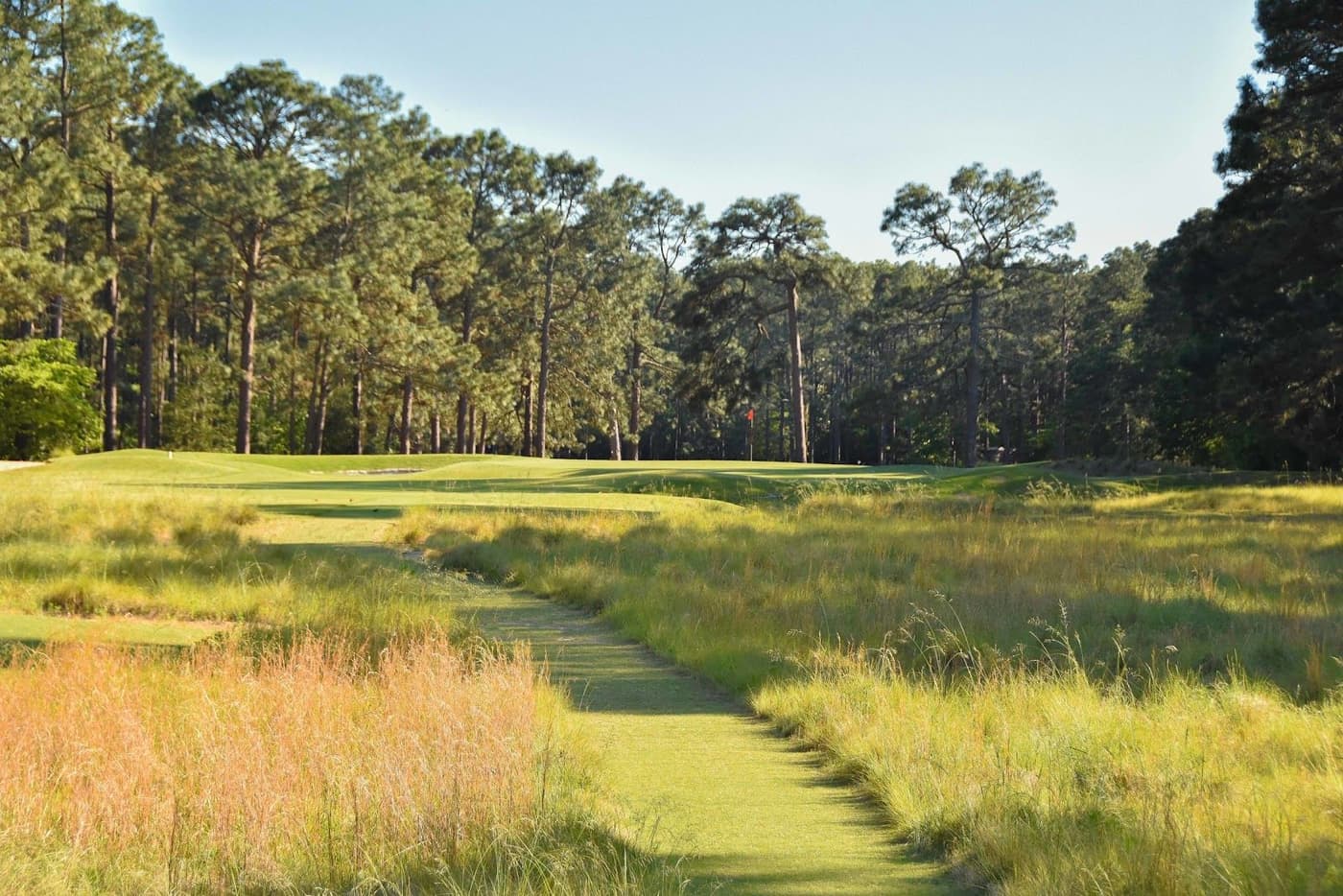
- Address1005 Midland Rd, Southern Pines, NC 28387, USA
- Championships hosted
Pine Needles Lodge and Golf Club is located in the sandhills of North Carolina. It’s where course architect Donald Ross lived, as the area reminded him of his Scottish home.
Laid out in 1927 Pine Needles is one of Donald Ross’s best creations. Most people head to North Carolina to play the courses at Pinehurst but overlook Pine Needles at your peril. Host to three US Women’s Open Championships, most recently in 2007, Pine Needles is a supreme challenge. The 2005 course restoration by John Fought has returned the classic Ross course to its former glory. “Time had softened some of the challenges of Pine Needles,” said Fought. “We tried to bring those subtleties back, especially around the greens.” Aided by vintage aerial photography Ross’s original vision has once more become a reality.
Donald Ross believed that a hole should yield an equal number of birdies and bogies and the 3rd, the signature hole is perhaps the perfect example. It’s a lovely one-shot hole that calls for a precise tee shot over a small pond and wetlands area. The deep and slippery putting surface slopes sharply from back to front. Five bunkers guard the green and if you leave yourself above the hole, three putts is a real possibility. We’re sure Donald Ross smiled when the 3rd yielded 52 birdies and 53 bogeys during the 2003 US Women’s Open.
The following article was written by golf course architect John Fought and is an edited extract from Volume Four of Golf Architecture: A Worldwide Perspective. Reproduced with kind permission. To obtain a copy of the book, email Paul Daley at fswing@bigpond.net.au
The original plan for Pine Needles was developed in 1927 and construction began the same year by one of Ross’s trusted associates, Frank Maples. Upon study of the course drawing that Ross developed, it can be noted that the original greens were small squares. At this time in the Pinehurst area, fairways and tees were grassed with common Bermuda grass, while greens in the sand hills in the 1920s were sand, not grass. In the mid-1930s, when simple irrigation systems were installed on the golf courses, grass was then planted on the putting surfaces.
Pine Needles actually began as one of the first golf/residential communities. This project also featured a wonderful art-deco hotel at its core. Early photographs of the course reveal the hotel in the background. Unfortunately, when the depression began in the early 1930s, the hotel was converted to a retirement care facility. The golf course was also sold but faded from view until approximately 1950 when Warren and Peggy Kirk Bell purchased the course and began construction of a lodge on the south end of the property. Further land was cleared in the swale between the new lodge and the course to accommodate a spacious driving range and practice facility.
As golf grew, Pine Needles made improvements to the golf course and surrounding facilities. The original Bermuda grass greens were replaced by bent grass along with changes to the infrastructure, such as better irrigation and cart paths. For more than 50 years, these improvements aided the resort’s reputation. After considerable discussion among the Bell family, however, it was decided in 2003 that these modest changes were not keeping pace with the resort guests’ tastes for quality turf conditions. The family decided that major infrastructure improvements were needed to the golf holes.
At our initial meeting during 2003, I discussed the important elements that would need attention. Without question, the biggest problem was the old push-up greens that were now 70 years old. It was essential that the greens be reconstructed to USGA specifications with proper drainage and irrigation. I knew that we would have to also remove a large quantity of the trees that were encroaching around the green complexes (and) this tree removal would have to be undertaken before the green complexes could be reconstructed. To a lesser degree, we focused on the reconstruction of bunkers and the addition of some new tees.
With our work completed, the golf course reopened during the late fall of 2004. The only remaining test would be from the USGA and the contestants of the Women’s US Open (in 2007). Unfortunately, just as the tournament began so did the thunderstorms but the course responded beautifully to the demands put on it. It was one of my proudest moments when Mike Davies, USGA Director of Rules and Competitions, related to me that this is now one of his favourite courses. Another official stated that it was the finest restoration he had ever seen. I was proud and happy for my friends, the Bell family, who had put their confidence in me just a few short years before. Pine Needles will always remain one of my favourite golf projects.
Course Reviews
Leave a Review
This course has not been reviewed.
If you have played this course, consider .
Thanks for the review
Your review has been successfully submitted and will be reviewed for approval.
Course Reviewed
You’ve already submitted a review for this course.
Course Architect
View All
Donald Ross worked with Old Tom Morris at St Andrews in 1893 then spent part of the following season at Carnoustie before returning to serve under the Dornoch club secretary John Sutherland.



